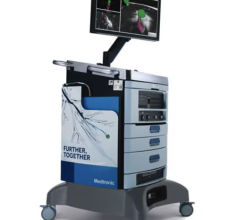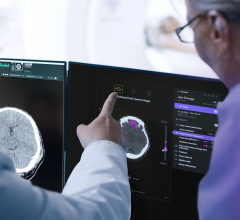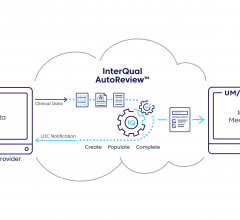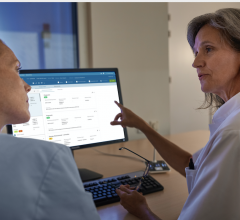
Congress recently passed the Protecting Access to Medicare Act of 2014 (H.R. 4302) that delays a 24 percent Medicare physician payment cut for 12 months. The legislation also requires use of appropriate use criteria (AUC) and clinical decision support (CDS) software to get Medicare reimbursement, which will likely shift focus onto IT vendors who can supply this software. In addition, the use of CDS is part of Stage 2 Meaningful Use requirements for electronic medical records (EMR), so the new Medicare requirements will move CDS up on many IT departments’ priority lists.
The legislation directs the secretary of the U.S. Department of Health and Human Services (HHS) to identify mechanisms, such as clinical decision support systems, by which ordering professionals can consult these criteria. Such ordering systems reduce duplicate and/or unnecessary scanning and associated costs. This may be the first time that Medicare would require providers to use such point-of-care, evidence-based ordering for exams or procedures.
“As medical imaging is the cutting-edge of modern medicine, this requirement is a major step forward in healthcare reform. Providers will have the latest medical evidence at their fingertips before a scan is ordered — ensuring that patients get the right exam for their condition and avoid unnecessary care. This will reduce unnecessary costs and help pave the way for a more responsive and efficient healthcare system,” said Paul H. Ellenbogen, M.D., FACR, chair of the American College of Radiology (ACR) Board of Chancellors in a statement following the legislation’s passage. “The imaging provisions in this bill will help remove the conjecture from health policy regarding how much imaging is necessary, whether patients are getting appropriate care and how efficiently America is using its healthcare resources.”
However, the ACR said it has concerns regarding the broad statutory expansion of the authority of the secretary of HHS to revalue Medicare physician payments based on a large number of criteria to be used at the secretary’s discretion.
Stage 2 CDS and CPOE Requirements
Stage 2 Meaningful Use requirements for EMR calls for the use of both clinical decision support and computerized physician order entry (CPOE). While both of these technologies are starting to find their way into radiology practices, the governmental guidelines for them are vague, partly because of the variety of ways the technology can be implemented to improve patient care, while at the same time reducing costs.
CDS can be closely integrated with CPOE. CPOE for pharmacy orders has been around for several years in an effort to leverage technology to reduce medication errors. These systems raise alerts to inform a physician they might have entered an adult dosage for a pediatric patient, prescribed a drug that is similar to one already being taken, or provide notifications for possible drug interactions or patient drug allergies.
The primary driver for pharmacy CPOE was patient safety. However, with healthcare reform, new drivers for CPOE adoption in other areas include meeting Meaningful Use, making sure tests ordered will be eligible for reimbursement, helping reduce healthcare costs, meeting guidelines for quality assurance efforts and reducing duplicate tests. Next-generation CPOE systems will integrate more sophisticated CDS software that can help determine if tests, imaging exams or procedures are appropriate and the most cost-effective solution for patients with specific conditions or symptoms listed in the EMR.
Since AUC and society clinical guidelines are based on review of evidence-based medicine, wiring them into a CPOE system can improve their compliance. For the cases where guidelines are not clear or the physician feels a different test than what is recommended is necessary, all CPOE systems allow some process to override the alerts built into the system.
An example of this is EMR vendor CliniComp, which has offered an integrated CPOE and CDS for pharmacy for years, but its system can now be customized for use in any department. In 2014, the vendor is launching a Web-based version of the software with the ability to add ancillary departments, such as radiology. The program allows creation of a set of rules and alerts based on protocols, guidelines, alert thresholds, CPT codes or other criteria set by the hospital. The system pulls data from the entire patient EMR when assessing patients and alert criteria, including drug allergies and lab values.
Imaging AUC Software
The ACR has partnered with the National Decision Support Company (NDSC) to develop a CDS software platform. ACR Select software offers an integration-ready imaging decision support platform based on ACR appropriateness criteria. Designed as a vender-neutral platform, it can be integrated into any certified electronic health record technology (CEHRT). It also offers expanded integration capabilities that support the HL7 Version 3 Standard: Context Aware Knowledge Retrieval Application (Infobutton), Knowledge Request. NDSC also focuses on direct integration of this software with CPOE workflows.
The ACR Select platform captures and provides aggregate end user feedback to the ACR. This
feedback loop creates the opportunity to release and review new evidence, and improve the decision support platform. NDSC’s third version of ACR Select imaging decision supports content set and incorporates relative radiation levels (RLLs) for procedures. It also provides information about the relative cost of procedures and has incorporated patient educational content from radiologyinfo.org, a public information website developed and funded by the ACR and the Radiological Society of North America (RSNA).
Keeping Up To Date
While modern healthcare embraces evidence-based medicine, keeping current on all the changes in technology, U.S. Food and Drug Administration (FDA) approvals, guideline updates and massive amounts of new clinical trial data can be overwhelming. “We can’t keep up with medical information. There has been an explosion of medical journals — more than 20,000 of them. Also, there is no time,” said Timothy Counihan, M.D., FACS, FASCRS, a surgeon at Berkshire Medical Center in Pittsfield, Mass.
Also, just because the knowledge is available does not mean clinicians use it. “One hundred years ago it was discovered hand-washing helped reduce infection rates, but today we still have hand-washing rates of 25-30 percent,” he contended. For this reason he said reminders are needed, which can be provided by CDS software.


 May 22, 2024
May 22, 2024 









